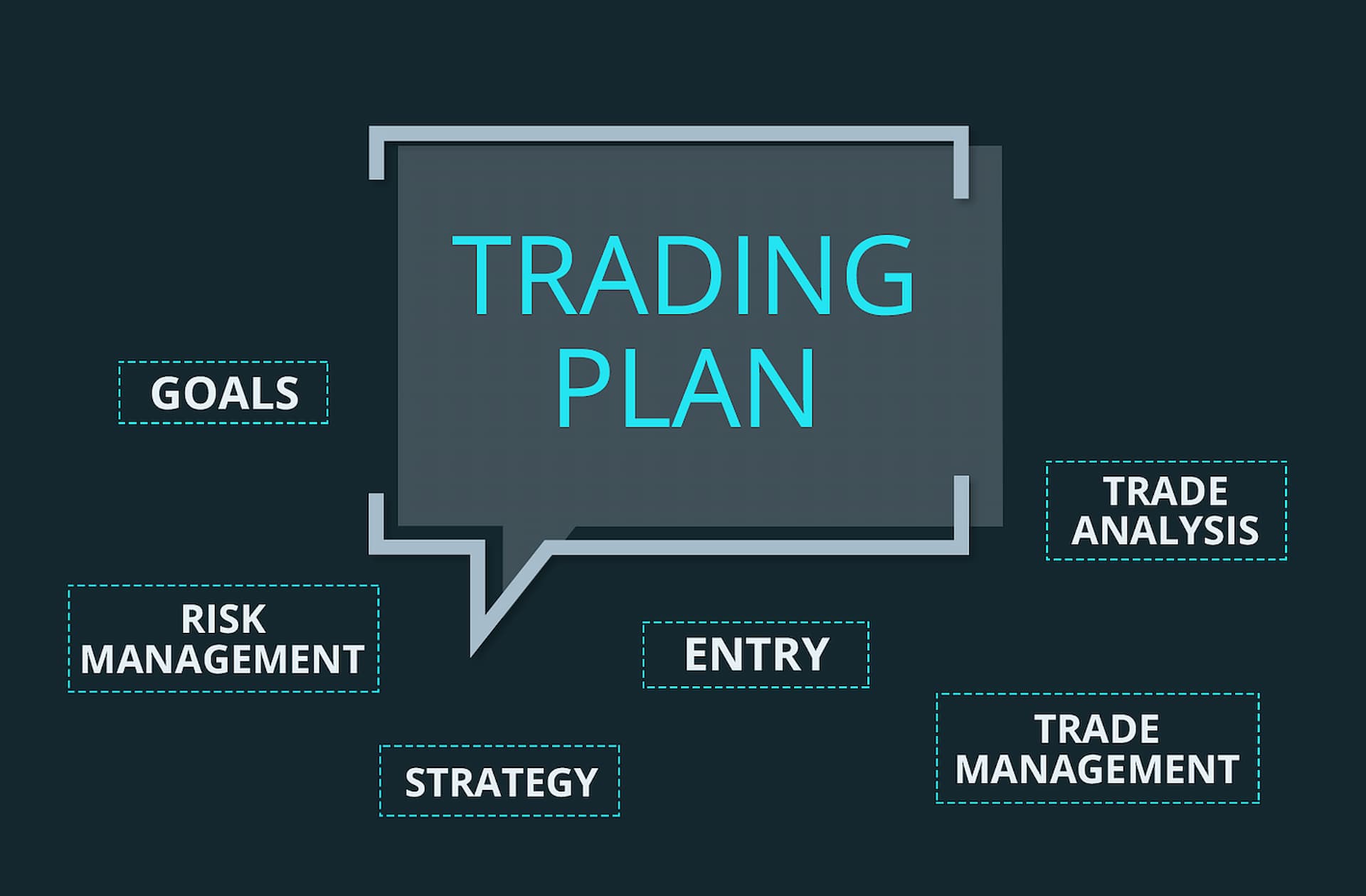The Importance of a Trading Plan
Discover why having a trading plan is crucial for success in financial markets and learn how to create a comprehensive trading strategy.

The Importance of a Trading Plan
A trading plan is an essential tool for anyone serious about achieving consistent success in the financial markets. Whether you're trading forex, stocks, commodities, or cryptocurrencies, having a structured approach to your trading activities is crucial. A well-crafted trading plan serves as your roadmap, guiding you through the complexities of the market and helping you stay disciplined and focused. This guide delves into the importance of a trading plan and provides insights on how to create one that aligns with your financial goals and trading style.
1. Defining Your Trading Goals
The foundation of any trading plan begins with clearly defined goals. These goals should be specific, measurable, achievable, relevant, and time-bound (SMART). For example, you might set a goal to achieve a 15% return on your trading capital within six months or to master a particular forex trading strategy within a year. The clarity of your goals will serve as a compass, directing your trading decisions and helping you measure your progress.
It's essential that your trading goals align with your broader financial objectives. If your primary focus is on capital preservation, your trading plan should prioritize risk management strategies, such as limiting your exposure to volatile markets like cryptocurrencies or using stop-loss orders to protect your capital. Conversely, if your goal is to grow your wealth aggressively, you might incorporate more speculative strategies, such as leveraging your positions in forex or stocks. By aligning your trading goals with your financial aspirations, you create a cohesive strategy that supports your overall wealth-building efforts.
2. Establishing Risk Management Rules
Risk management is the cornerstone of a successful trading plan. It is essential to protect your capital while seeking to maximize returns. Your trading plan should include specific risk management rules that guide how much of your capital you're willing to risk on any single trade and how you plan to protect your investments across different market conditions.
A common rule of thumb is to risk no more than 1-2% of your total trading capital on any single trade. This approach helps ensure that even if a trade goes against you, the impact on your overall portfolio remains manageable. Additionally, setting stop-loss orders is a critical aspect of risk management. For instance, when trading forex, you might set a stop-loss just below a key support level or use a trailing stop to lock in profits as the trade moves in your favor.
Diversification is another essential component of risk management. By spreading your investments across various asset classes—such as stocks, commodities, and cryptocurrencies—you reduce the risk associated with any single market. Diversification helps smooth out the performance of your portfolio, reducing the impact of market volatility and protecting your capital from significant drawdowns.
3. Determining Your Entry and Exit Criteria
Clear entry and exit criteria are vital components of a trading plan. These criteria help you make objective decisions, reducing the influence of emotions like fear and greed that can lead to impulsive and often costly trading mistakes.
Your entry criteria should be based on a combination of technical and fundamental analysis. For example, in forex trading, you might decide to enter a trade when the price crosses above a key moving average, indicating a potential upward trend. Alternatively, you might enter a trade based on a fundamental catalyst, such as a positive earnings report in stocks or a favorable economic indicator in the forex market.
Exit criteria are equally important and should be clearly defined in your trading plan. Determine in advance the conditions under which you will exit a trade, whether it's to take profits or to cut losses. For instance, you might decide to exit a trade once you've achieved a certain percentage gain or if the market moves against you by a predetermined amount. By setting these criteria in advance, you reduce the likelihood of making impulsive decisions based on short-term market fluctuations.
4. Maintaining Discipline and Consistency
Discipline and consistency are critical to long-term success in trading. Even the most well-crafted trading plan is only effective if you adhere to it consistently. Your trading plan should include strategies for maintaining discipline, such as setting daily or weekly trading goals, reviewing your performance regularly, and developing a routine that supports your trading activities.
A consistent routine might involve dedicating specific times each day to analyze the markets, review your open positions, and adjust your trading plan as needed. This routine helps create a disciplined approach to trading, reducing the temptation to make impulsive decisions based on market noise or short-term emotions.
Tracking your performance is also crucial for maintaining discipline. Keep a detailed trading journal where you record every trade, including your reasons for entering and exiting, the outcome, and any lessons learned. Regularly reviewing your journal can help you identify patterns in your trading behavior, refine your strategies, and stay focused on your long-term goals.
5. Adapting to Changing Market Conditions
Markets are constantly evolving, and what works today may not work tomorrow. A good trading plan should be flexible enough to adapt to changing market conditions. This might involve adjusting your risk management rules, altering your entry and exit criteria, or even taking a break from trading during periods of high market volatility.
For example, during times of economic uncertainty or major geopolitical events, market volatility can increase significantly. In such situations, you might decide to reduce your position sizes, widen your stop-loss orders, or focus on less volatile assets like commodities or bonds. Adapting your trading plan to current market conditions helps protect your capital and ensures that you can continue trading successfully over the long term.
Staying informed about global economic trends and market developments is also crucial for adapting to changing conditions. Regularly review economic calendars, follow news events, and monitor market sentiment to stay ahead of potential market shifts. By remaining vigilant and flexible, you can adjust your trading plan to capitalize on new opportunities while managing risks effectively.
6. The Psychological Aspect of Trading
Trading can be emotionally challenging, and your trading plan should address the psychological aspects of trading. Managing emotions like fear, greed, and overconfidence is critical to making rational, objective decisions in the market.
One effective psychological strategy is to focus on the process rather than the outcome. Instead of obsessing over individual trades or daily profit and loss, concentrate on following your trading plan and executing your strategies consistently. Over time, this process-oriented approach can help you build confidence and reduce the emotional highs and lows that often accompany trading.
Taking regular breaks from trading is also important for managing stress and maintaining a healthy mindset. Stepping away from the markets allows you to recharge, reflect on your performance, and return with a fresh perspective. Breaks help prevent burnout and reduce the risk of making impulsive, emotion-driven decisions that can lead to significant losses.
7. Continuous Learning and Improvement
The financial markets are constantly evolving, and successful traders are those who continuously learn and adapt to new information and changing conditions. Your trading plan should include a commitment to ongoing education and self-improvement.
Stay informed about new developments in the markets, emerging trends, and evolving trading strategies. This might involve reading books and articles on trading, attending webinars and workshops, or participating in online trading communities. Continuous learning helps you stay ahead of the curve and adapt your trading plan to new opportunities and challenges.
Regularly reviewing and updating your trading plan is also essential for continuous improvement. As you gain experience and your trading style evolves, your plan should reflect these changes. Periodically assess your goals, strategies, and risk management rules to ensure they remain aligned with your objectives and the current market environment.
Conclusion
In conclusion, a trading plan is not just a guideline but a critical component of long-term success in the financial markets. Whether you're trading forex, stocks, commodities, or cryptocurrencies, a well-structured trading plan provides the discipline, consistency, and flexibility needed to navigate the complexities of the market.
By defining clear goals, establishing robust risk management rules, setting objective entry and exit criteria, maintaining discipline, adapting to changing market conditions, and addressing the psychological aspects of trading, you can increase your chances of success and achieve your financial objectives. Remember, the markets are unpredictable, but with a solid trading plan, you can approach trading with confidence and consistency, ultimately building a sustainable and profitable trading career.
TAGS
Latest Education Articles
Show more
Earnings Reports and Equity CFDs

Trend vs. Range Strategies

Trading Breakouts vs. Pullbacks

Hedging Basics for Intermediate Traders
Take your trading to the next level.
Join the broker built for global success in just 3 easy steps. A seamless experience built for traders who value speed and simplicity.

Create Your Account

Make Your First deposit
